Located about 2,300 miles (3,680 km) from the nearest continental shore, the Hawaiian Islands are the most isolated group of islands on the planet. The plant and animal life of the Hawaiian archipelago is the result of early, very infrequent colonizations of arriving species and the slow evolution of those species—in isolation from the rest of the world's flora and fauna—over a period of at least 5 million years. As a consequence, Hawai'i is home to a large number of endemic species. The radiation of species described by Charles Darwin in the Galapagos Islands which was critical to the formulation of his theory of evolution is far exceeded in the more isolated Hawaiian Islands.
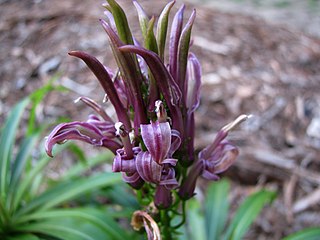
The Hawaiian lobelioids are a group of flowering plants in the bellflower family, Campanulaceae, subfamily Lobelioideae, all of which are endemic to the Hawaiian Islands. This is the largest plant radiation in the Hawaiian Islands, and indeed the largest on any island archipelago, with over 125 species. The six genera involved can be broadly separated based on growth habit: Clermontia are typically branched shrubs or small trees, up to 7 metres (23 ft) tall, with fleshy fruits; Cyanea and Delissea are typically unbranched or branching only at the base, with a cluster of relatively broad leaves at the apex and fleshy fruits; Lobelia and Trematolobelia have long thin leaves down a single, non-woody stem and capsular fruits with wind-dispersed seeds; and the peculiar Brighamia have a short, thick stem with a dense cluster of broad leaves, elongate white flowers, and capsular fruits. The relationships among the genera and sections remains unsettled as of April 2022.

Hibiscadelphus is a genus of flowering plants that are endemic to Hawaiʻi. It is known by the Native Hawaiians as hau kuahiwi which means "mountain Hibiscus". The Latin name Hibiscadelphus means "brother of Hibiscus". It is distinctive for its peculiar flowers, which do not fully open. Hibiscadelphus is in the family Malvaceae, subfamily Malvoideae. Several of the species in this small genus are presumed extinct, as a result of coextinction with their primary pollinators, the Hawaiian honeycreepers.
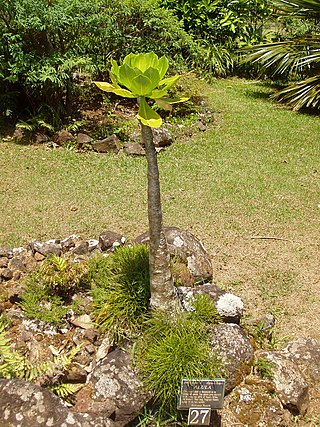
Brighamia insignis, commonly known as ʻŌlulu or Alula in Hawaiian, or colloquially as the vulcan palm or cabbage on a stick, is a species of Hawaiian lobelioid in the bellflower family, Campanulaceae. It is native to the islands of Kauaʻi and Niʻihau, but has been extinct in the wild since at least 2019-2020. This short-lived perennial species is a member of a unique endemic Hawaiian genus with only one other species.

Hibiscadelphus distans is an extremely rare species of flowering plant in the mallow family, Malvaceae, that is endemic to the island of Kauaʻi in Hawaii. It is known as hau kuahiwi in Hawaiian, which means "upland Hibiscus tiliaceus." It is a bush or small tree with heart-shaped leaves and yellow flowers and grows at between 1,000 and 1,800 feet in the remnants of native dry forests. Despite its rarity, it is believed to be the only surviving species in the genus Hibiscadelphus which is only known from Hawaii, the other five species having recently become extinct in the wild, some being known from only a single plant.

The Kauaʻi cave wolf spider, also known to local residents as the blind spider, is only known to occur in a few caves in a lava flow with an area of 10.5 km2 (4.1 sq mi) in the Kōloa–Poʻipū region of Kauaʻi, Hawaiian Islands, and only six populations are known to exist. While their nearest surface-dwelling relatives have large eyes, this species has completely lost its eyes. They reach a body length around 20 mm (0.8 in), and are reddish brown and completely harmless to people. Unlike most wolf spiders, it produces only 15 to 30 eggs per clutch. The female carries the egg sac in her mouthparts until the spiderlings hatch.
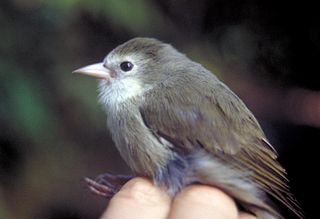
The ʻakikiki, also called the Kauaʻi creeper, is a critically endangered Hawaiian honeycreeper endemic to Kauaʻi, Hawaiʻi. It is the only member of the genus Oreomystis. Of the Hawaiian birds known to be extant, it is thought to be the most endangered, with only 454 wild individuals known as of 2018. A survey report in 2021 estimated the population at 45 with a 5 percent annual decrease, and in July 2023 the remaining number of wild birds was estimated to be just 5 individuals. This species is predicted to be extinct in the wild in 2023.

Newcomb's snail is a species of air-breathing freshwater snail, a gastropod mollusk in the family Lymnaeidae. This species is endemic to Hawaii, in the United States, and its natural habitat is rivers. It is threatened by habitat loss.

Melicope knudsenii, commonly known as Olokele Valley melicope or Knudsen's melicope, is a species of flowering plant in the family Rutaceae, that is endemic to Hawaii. It inhabits montane mesic forests dominated by Acacia koa, Metrosideros polymorpha, and Dicranopteris linearis on Kauaʻi and East Maui (Auwahi). Associated plants include Syzygium sandwicensis, Cheirodendron trigynum, Myrsine lessertiana, Ilex anomala, Alphitonia ponderosa, Zanthoxylum dipetalum, Kadua terminalis, Pleomele aurea, Bobea spp., Tetraplasandra waimeae, Xylosma hawaiensis, Eurya sandwicensis, Psychotria mariniana, Melicope anisata, Melicope barbigera, Planchonella sandwicensis, Dodonaea viscosa, and Dianella sandwicensis. It is threatened by habitat loss. Like other Hawaiian Melicope, this species is known as alani. This is a federally listed endangered species of the United States.

Cyanea is a genus of flowering plants in the family Campanulaceae that are endemic to Hawaii. The name Cyanea in Hawaiian is hāhā.
Euphorbia eleanoriae is a rare species of flowering plant in the euphorb family known by the common name Nā Pali sandmat. It is endemic to Kauaʻi, Hawaii. Like other native Hawaiian euphorbs it is called ʻakoko locally. This plant was only discovered in 1992 and described to science in 1996 as Chamaesyce eleanoriae. At that time there were fewer than 500 plants known, all occurring in small populations scattered across the sheer cliffs along the Nā Pali Coast of Kauaʻi. By 2001 the total population had already dropped; only three populations were found, for a total of fewer than 50 plants. The plant was federally listed as an endangered species of the United States in 2010.
Cyanea crispa is a rare species of flowering plant known by the common names crimped rollandia and Koolau Range rollandia. It is endemic to Oahu, where there are no more than fifty individuals remaining in the Koʻolau Range. It is a federally listed endangered species of the United States. Like other Cyanea it is known as haha in Hawaiian.
Cyanea copelandii is a rare species of flowering plant in the bellflower family known by the common name treetrunk cyanea. It is endemic to Maui, where there are no more than 250 individuals remaining in the wild. It is a federally listed endangered species of the United States. Like other Cyanea it is known as hāhā in Hawaiian.
Cyanea dolichopoda was a species of shrub in the bellflower family that was endemic to Kauai. It was discovered in 1990 and has not been located in the wild since 1992. Like other Cyanea it is known as haha in Hawaiian.
Cyanea eleeleensis was a rare species of flowering plant in the bellflower family known by the common name Eleele cyanea. It was endemic to Kauai, where it has been declared extinct. It was federally listed as a critically endangered species of the United States in 2010. Like other Cyanea it is known as haha in Hawaiian.

Cyanea pinnatifida is a rare species of flowering plant in the bellflower family known by the common name sharktail cyanea. It is endemic to Oahu, but it is now extinct in the wild and only exists in cultivation. Like other Cyanea it is known as haha in Hawaiian.

Cyanea remyi is a rare species of flowering plant in the bellflower family known by the common name Remy's cyanea. It is endemic to Hawaii, where it is known only from the island of Kauai. It is a federally listed endangered species of the United States. Like other Cyanea, it is known as haha in Hawaiian.
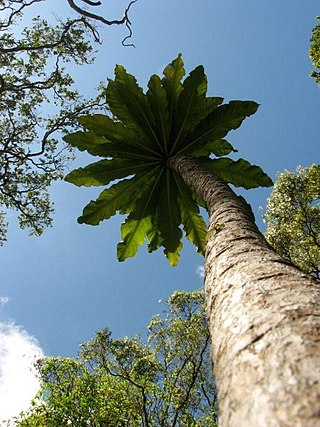
Cyanea superba is a rare species of flowering plant in the bellflower family known by the common names Mt. Kaala cyanea and superb cyanea. It is endemic to the island of Oahu, but it is now extinct in the wild. It exists in cultivation and some individuals have been planted in appropriate habitat. It is a federally listed endangered species of the United States. Like other Cyanea it is known as haha in Hawaiian.
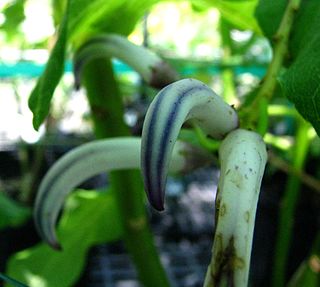
Cyanea rivularis is a rare species of flowering plant in the bellflower family known by the common name plateau cyanea. It is endemic to Hawaii, where it is known only from the island of Kauaʻi. There are three small populations of the plant remaining in the wild, for a total of 19 individual plants. The plant was federally listed as an endangered species of the United States in 1996.













